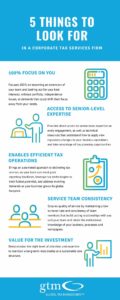The U.S. Supreme Court’s South Dakota v. Wayfair (Wayfair) decision broke new ground in 2018 when it expanded sellers’ obligations to collect sales tax in new states. The landmark case reversed the ‘physical presence’ nexus standard for sales tax, giving states authority to impose tax obligations on remote sellers from multistate sales through ecommerce and fulfillment platforms. And, with just a few exceptions, states were quick to adopt. Most did so in the first two years, with just two holdouts – Florida and Missouri – taking their time. That changed in April 2021 and May 2021 respectively, when Florida and Missouri passed economic nexus legislation.
Wayfair and Implementation: Where We Stand
The first wave of implementation is already well underway with high levels of success. However, even with published guidance from state taxing authorities, questions remain. While states may vary in terms of certain aspects of Wayfair’s implementation and companies are responding to the legislation on different timelines, there are enough “knowns” to establish a broad view of where Wayfair implementation currently stands. We can also anticipate what tax departments can expect to navigate – hopefully, ahead of enforcement by state taxing authorities.
Compliance Amid Uncertainty
Just as states adopted Wayfair on a rolling timeline, companies are following suit, with legislation in the last holdout state – Missouri – set to go into effect on January 1, 2023. While compliance by taxpayers has been underway for quite some time, uncertainty still remains.
Because Wayfair did not establish a federal standard for economic nexus, there are substantial state-to-state differences. Aside from threshold variances, many states measure transactions differently, with some operating on a quarterly basis while others measuring by the current or preceding year and yet others measuring on a set annual date. In addition, many states have imposed marketplace facilitator laws, imposing a tax obligation on the company that facilitates an online sale as well as requiring the seller to verify that the marketplace facilitator is collecting the sales tax. And there’s this – currently, every state has a different effective date for imposing a remote seller collection requirement. Establishing internal processes that not only help businesses calculate and comply with tax obligations in its relevant jurisdictions, but also enabling them to monitor law changes that may introduce new tax requirements, continues to be a challenge.
Accountability for Prior Years
Based on the reasons above, many sellers have taken time to adjust to the complexities related to the law’s adoption and are now making steps towards compliance. In turn, customers are now being hit with requests from their vendors to pay sales/use taxes for up to four years prior; provide proof that they have already paid use tax; or provide proof that their purchases are exempt. Receiving these letters – commonly known as XYZ Letters — out of the blue can be jarring, and can throw a wrench in your daily tax operations.
An XYZ Letter is a form letter sent from a seller to a buyer to address sales tax on prior transactions. You’re likely receiving it for one of several reasons:
- Compliance requirements post-Wayfair under economic nexus and physical nexus, including:
- Voluntary disclosure of past obligations
- Preparations to begin charging sales tax in specific states
- The seller is under audit, and sending the XYZ letter as part of the abatement process
- The seller is updating their exemption certificates
Automation Challenges and Underutilized Tax Technology
Corporate tax is one of the most mission-critical operational functions within an organization, especially in a post-Wayfair and post-pandemic economy. Even before these developments, tax departments were notoriously mired in manual processes. On a monthly and annual basis, tax accountants are faced with gathering and manipulating disparate data sources to prepare tax returns and file information to be remitted to the various jurisdictions. These exercises were time- and risk-intensive even before Wayfair and COVID upended things further. Yet it is common that tax technology is underutilized, or unused altogether, within corporate tax departments, and resource-strained tax departments lack the bandwidth to maximize it fully.
Wayfair’s Next Act
While Missouri may have been the last state to sign Wayfair into law, it was the first to do with a caveat that protects brick-and-mortar business and service providers that have found it difficult to stay afloat in a digital marketplace. We expect that, moving forward, other states may introduce provisions to protect their local retailers and tax bases as well.
We also expect that some of the most resistant Wayfair adopters, technology companies, will begin to fall in line. Tech companies often offer both products and services, sparking uncertainty over what is taxable, and where. This uncertainty will likely abate somewhat as enforcement targets sellers of digital goods.
Among the most critical elements on the horizon, though, is the matter of audits. Most states have a 3-year statute of limitations to audit for uncollected sales taxes. Given the start date of Wayfair enactments, the time to begin audits for a 3-year period is rapidly approaching, and interest and penalties could range in excess of 25%.
Tremendous effort by taxpayers has gone into post-Wayfair compliance, but there is still work to be done. Global Tax Management (GTM) can help you determine how to best move forward as Wayfair’s next chapter unfolds, and help you navigate other tax challenges in the ever-changing and complex landscape we live in today. Contact us for more information.



